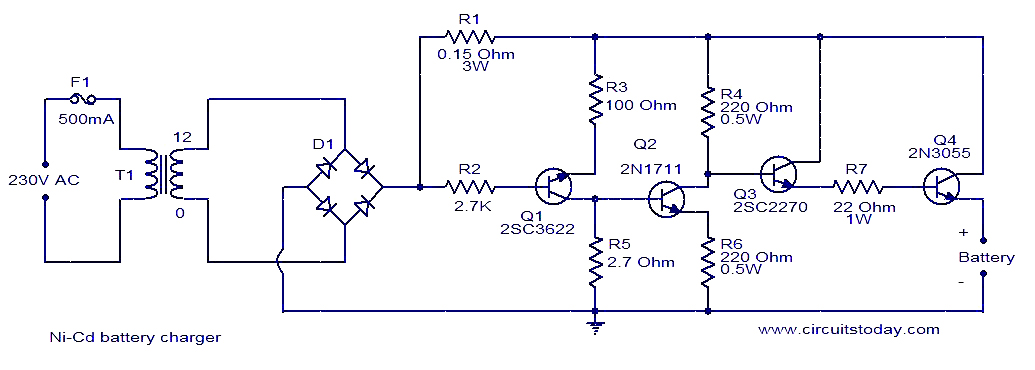Description.
This circuit can be primarily used for charging 12V Ni-Cd battery packs. Any way 6V and 9V battery packs can be also charged by using this circuit a little compromise on power efficiency. The built in automatic current regulator regulates the charging current to somewhat 4 amperes. When the charging current reaches 4A, the voltage across resistor R1 becomes 0.7V and switches the transistor Q1 ON. The transistor Q2 which is now in ON state will shorts the base of Q3 to ground and inhibits the biasing of Q4 through which the charging is done. That is how the current regulation is achieved. When charging low voltage battery packs, the excess voltage will be dropped across Q4.It is advised to use a heat sink with transistor Q4.
Circuit diagram with Parts list.
Notes.
- The circuit can be assembled on a Vero board.
- T1 can be a 230V primary, 12V secondary,4A step down transformer.
- Bridge D1 can be made by using 1N5400 diodes.
- Fuse F1 can be a 500mA type.


6 Comments
Q1 emitter and collector are reversed incorrectly, are they not?
It should have been shown as PNP transistor otherwise it is correct.
This circuit is meant for charging Ni Cad batteries which require a constant current of 4 Amos. Cannot be used for AA batteries. Suitable for D cells.
Hi Krishnendu what is the capacity of the battery you want to charge both AH and terminal voltage details are required.
p]s details project in 6v battery charger using 4 diode,2 transistor,a transformer……………………..with material cost.
can I used this circuit for charging chargeable AA battery 2 -4.
Hmm. interesting. i always use a rechargeable battery but never knew how the charge operates.